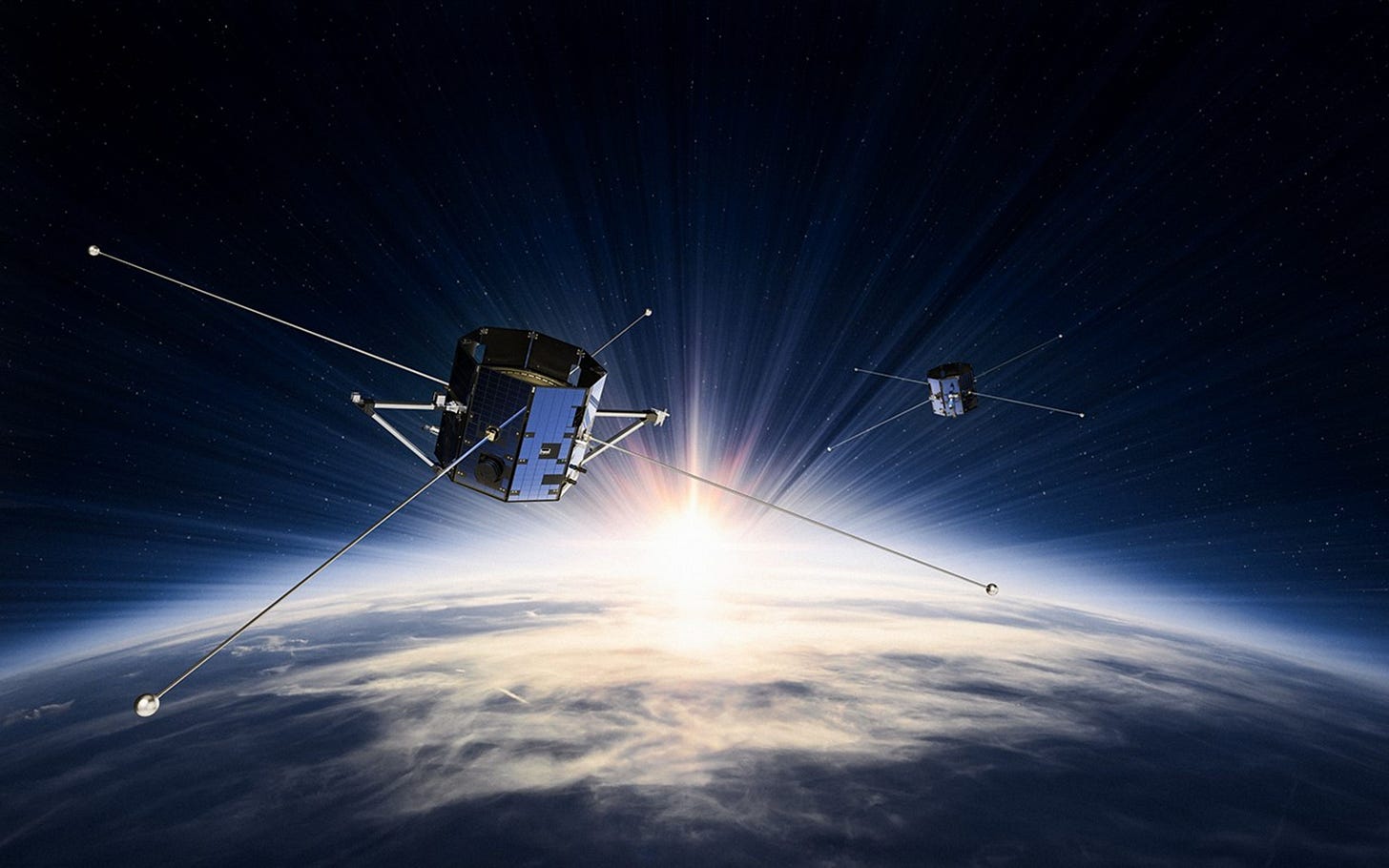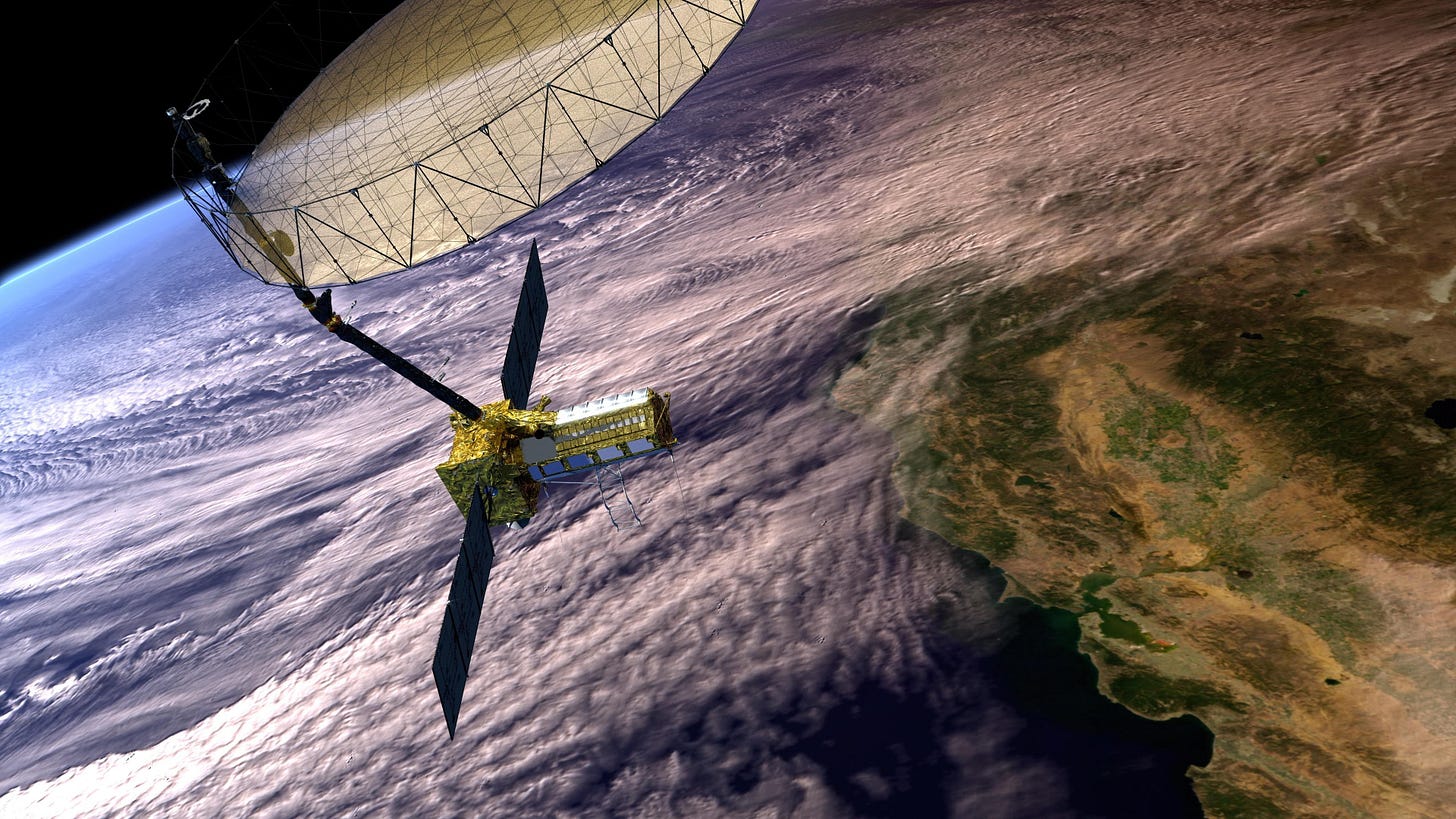The Overview — Reckoning
Fueling the next generation of aerospace engineers
Reckoning
A moment of truth; a critical point of reflection, consequence, or change.
Welcome back to The Overview! Over the past few weeks, the space community has been grappling with deep uncertainty. From sweeping NASA workforce cuts to high-stakes budget battles in Congress, the nation is entering a period of reckoning about the future of space science.
📉 NASA budget cuts: 4000 employees, or about 20% of the NASA workforce, have opted to leave the agency through a deferred resignation program initiated by the Trump administration. The departures coincide with proposed cuts that would slash NASA's science budget by 47%. Congress is pushing back strongly, with both Senate and House budget drafts rejecting the most severe cuts and maintaining funding closer to current levels.
🚀 Space for Weather: Satellites are instrumental in understanding the Earth’s atmosphere and surface activity. These are the objectives of two NASA science missions currently in the news, TRACERS and NISAR.
🪐 ICYMI: We hosted Ashlee Vance, author of Elon Musk: Tesla, SpaceX, and the Quest for a Fantastic Future and founder of Core Memory, at Stanford recently. We discussed a variety of aerospace topics, from the current startup scene and his time researching and writing about SpaceX and Rocket Lab!
👋 Also, if you haven’t joined The Overview Discord, we’d love to see you there! Come chat about the latest happenings in aerospace, emerging technologies, and help shape what we explore next:
🚀 Aerospace News
Aerospace is crucial for a wide range of technological activities, including defense, communication, and positioning. All of these aspects are currently under discussion in the industry, with major undertakings like the United States’ Golden Dome commencing with substantial government investment (see some of the latest comments about the Golden Dome’s development plan).
Today, let’s take a look at one important aspect of space missions: weather monitoring. Specifically, two weather and earth observation missions that are currently in the news:
NASA’s TRACERS Mission Launches
On July 23rd, the NASA TRACERS (Tanden Reconnection and Cusp Electrodynamics Reconnaissance Satellites) mission was launched aboard a SpaceX Falcon 9 rocket from Vandenberg Air Force Base. The purpose of this mission is to measure and understand magnetic reconnection at the Earth’s polar cusps, which occurs when solar particles interact with the Earth’s magnetic field. This is crucial in understanding space weather and how it affects the Earth’s atmosphere. Scientists will combine data from TRACERS with other missions such as NASA’s MMS, PUNCH, and EZIE for complete analysis. TRACERS includes a pair of satellites in sun-synchronous orbit.
TRACERS is a NASA mission led by Professor David Miles at the University of Iowa, along with other institutes and NASA centers managing and providing instruments for the mission. Missions like TRACERS are an example of impactful projects that students, even at the undergraduate level, can get involved in through participation in research labs at their universities!
ISRO and NASA’s Joint NISAR Mission on the Horizon
Source: NASA
On a much larger scale than TRACERS, NASA (specifically its JPL branch) and ISRO have joint forces to develop the NISAR (NASA-ISRO Synthetic Aperture Radar) satellite, which launched successfully on ISRO’s GSLV-F16 rocket on Wednesday, July 30th.
NISAR is going to use a new radar technology called the Synthetic Aperture Radar (SAR), which takes advantage of the moving radar to create a “virtual antenna” that is much bigger than the actual antenna and produces very fine-resolution images. In the case of NISAR, this measurement is at a centimeter scale. NISAR will be one of the first missions to use SAR to map the Earth, using two different radar frequencies (S-band and L-band).
Centimeter-scale radar measurements of the Earth’s surface provide valuable data for all sorts of environmental monitoring applications, such as earthquake hazard detection, soil moisture measurements, predicting volcanic eruptions, and more.
NASA Budget Cuts
Source: NPR, Sky & Telescope
The space agency is facing an unprecedented workforce crisis. Nearly 4,000 NASA employees opted into the Deferred Resignation Program introduced by the Trump administration, reducing NASA's workforce by about 20%. This will reduce the agency from 18,000 to 14,000 employees.
This workforce reduction coincides with proposed budget cuts that would dramatically slash NASA's science programs. The Trump administration initially proposed cutting NASA science funding by 47%, from ~$7.3 billion to ~$3.9 billion, though Congress is pushing back with more modest reductions.
The proposed cuts would have forced the cancellation of 55 missions across NASA's science portfolio. Threatened programs include the Venus missions DAVINCI and VERITAS, the gravitational wave observatory LISA, and long-running missions like the Chandra X-ray Observatory and New Horizons.
Nearly 300 NASA employees signed The Voyager Declaration, a formal internal protest citing the long-term damage caused by ending missions and shrinking the workforce.
⛏️ Featured Technology
Fireside Chat with Ashlee Vance
Ashlee Vance is an award-winning journalist, author, and filmmaker who covers technology and Silicon Valley. He's best known for his 2015 biography Elon Musk: Tesla, SpaceX, and the Quest for a Fantastic Future. Vance has also written When the Heavens Went on Sale
We were lucky to have Ashlee Vance visit the Stanford Aero/Astro department early in June for an informal fireside chat. The talk was moderated by The Overview’s Anshuk Chigullapalli and Tycho Bogdanowitsch (who previously contributed to the Overview on this podcast). We went through a lot of fascinating topics, such as:
NASA’s budget cut, Elon-Trump feud, and Jared Isaacman’s nomination cut
Commonalities between aerospace founders
Surprises from investigating SpaceX and Rocket Lab
Lessons for students and early career folks
Europe’s aerospace landscape
And more! Check it out for some great insights.
💬 Quote of the Week
As we face this moment of reckoning on funding in NASA, it's worth putting the stakes in perspective:
“The taxpayers’ money that NASA spent on scientific exploration was $22 per person per year in the US before the proposed cut. As a comparison, it spent $5,600 and $2,600 per person per year on healthcare programs and national defense, respectively, in FY24. Of course, there would be a wide spectrum of opinions on what constitutes an adequate spending level. But I humbly think that $22 per person per year is a reasonable expenditure to find the meaning of human civilization in this vast, silent universe.”
— Hiro Ono, Why Do We Explore Space for Science?
Thanks for joining us for The Overview — Reckoning Edition. We hope that amidst all the uncertainty, we don't lose sight of what makes space exploration so important to who we are as a species.
If you enjoyed this edition, share The Overview with a friend or colleague who’s passionate about making aerospace an inclusive and welcoming community. Got any thoughts, questions, or topic requests? We’d love to hear from you — feel free to reach out at admin@theoverview.org!
Stellar vibes,
Tagg, Anshuk, Maggie, Isaac





